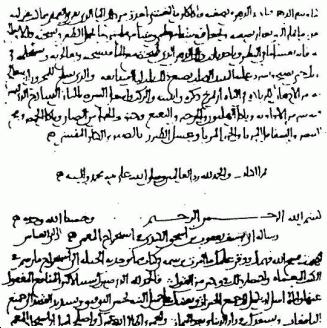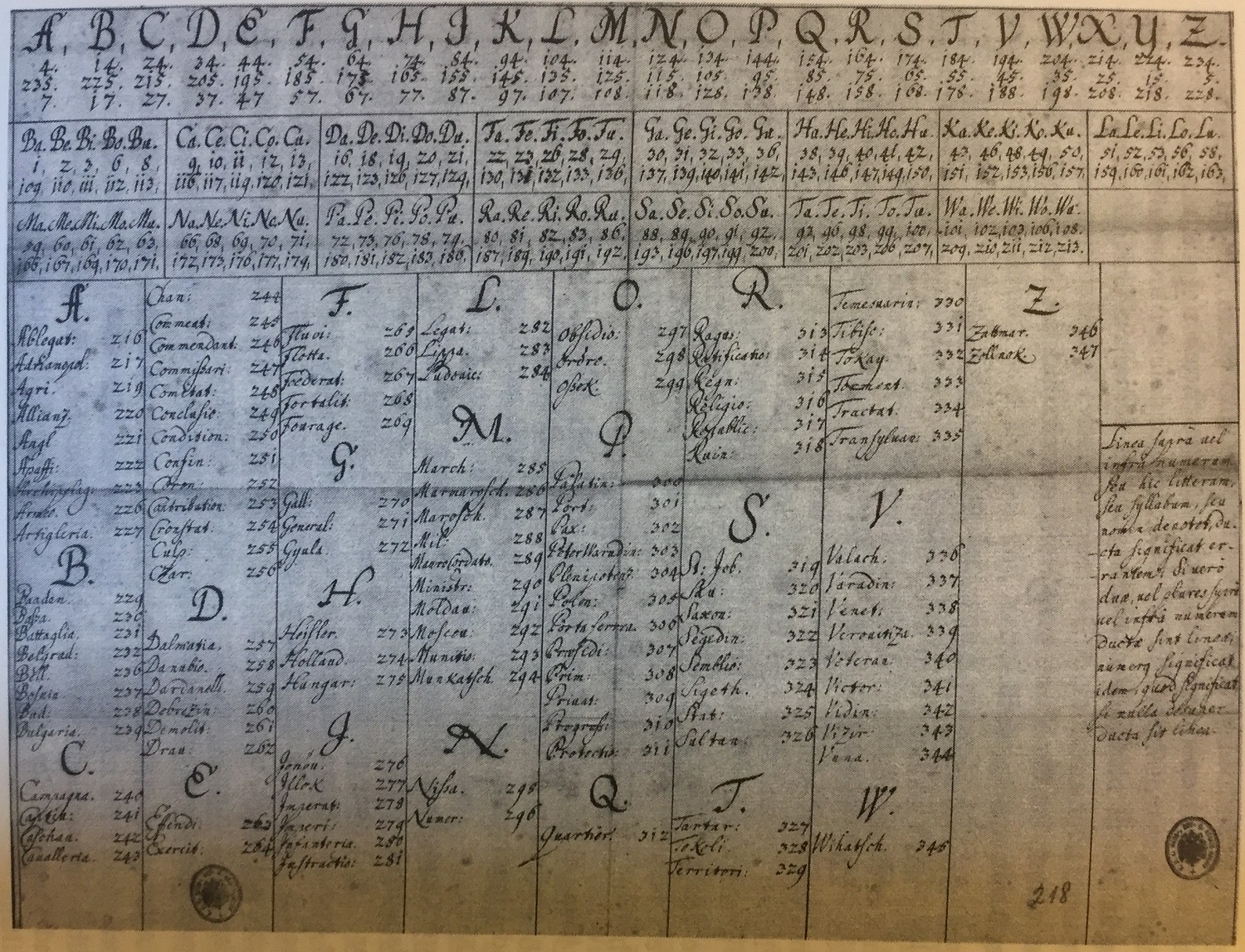|
Frequency Analysis
In cryptanalysis, frequency analysis (also known as counting letters) is the study of the frequency of letters or groups of letters in a ciphertext. The method is used as an aid to breaking classical ciphers. Frequency analysis is based on the fact that, in any given stretch of written language, certain letters and combinations of letters occur with varying frequencies. Moreover, there is a characteristic distribution of letters that is roughly the same for almost all samples of that language. For instance, given a section of English language, , , and are the most common, while , , and are rare. Likewise, , , , and are the most common pairs of letters (termed ''bigrams'' or ''digraphs''), and , , , and are the most common repeats. The nonsense phrase " ETAOIN SHRDLU" represents the 12 most frequent letters in typical English language text. In some ciphers, such properties of the natural language plaintext are preserved in the ciphertext, and these patterns have the poten ... [...More Info...] [...Related Items...] OR: [Wikipedia] [Google] [Baidu] |
English Letter Frequency (alphabetic)
Letter frequency is the number of times Letter (alphabet), letters of the alphabet appear on average in written language. Letter frequency analysis dates back to the Arabs, Arab mathematician Al-Kindi (c. AD 801–873), who formally developed the method to break Cipher, ciphers. Letter frequency analysis gained importance in Europe with the development of movable type in AD 1450, wherein one must estimate the amount of type required for each letterform. Linguists use letter frequency analysis as a rudimentary technique for language identification, where it is particularly effective as an indication of whether an unknown writing system is alphabetic, Syllabary, syllabic, or Ideogram, ideographic. The use of letter frequencies and frequency analysis plays a fundamental role in cryptograms and several word puzzle games, including hangman (game), hangman, ''Scrabble'', ''Wordle'' and the television game show ''Wheel of Fortune (U.S. game show), Wheel of Fortune''. One of the earliest ... [...More Info...] [...Related Items...] OR: [Wikipedia] [Google] [Baidu] |
Polyalphabetic Cipher
A polyalphabetic cipher is a substitution cipher, substitution, using multiple substitution alphabets. The Vigenère cipher is probably the best-known example of a polyalphabetic cipher, though it is a simplified special case. The Enigma machine is more complex but is still fundamentally a polyalphabetic substitution cipher. History The work of Al-Qalqashandi (1355–1418), based on the earlier work of Ibn al-Durayhim (1312–1359), contained the first published discussion of the substitution and transposition of ciphers, as well as the first description of a polyalphabetic cipher, in which each plaintext letter is assigned more than one substitute. However, it has been claimed that polyalphabetic ciphers may have been developed by the Arab cryptologist Al Kindi (801–873) centuries earlier. The Alberti cipher by Leon Battista Alberti around 1467 was an early polyalphabetic cipher. Alberti used a mixed alphabet to encrypt a message, but whenever he wanted to, he would switch to a ... [...More Info...] [...Related Items...] OR: [Wikipedia] [Google] [Baidu] |
Homophonic Substitution Cipher
In cryptography, a substitution cipher is a method of encrypting in which units of plaintext are replaced with the ciphertext, in a defined manner, with the help of a key; the "units" may be single letters (the most common), pairs of letters, triplets of letters, mixtures of the above, and so forth. The receiver deciphers the text by performing the inverse substitution process to extract the original message. Substitution ciphers can be compared with transposition ciphers. In a transposition cipher, the units of the plaintext are rearranged in a different and usually quite complex order, but the units themselves are left unchanged. By contrast, in a substitution cipher, the units of the plaintext are retained in the same sequence in the ciphertext, but the units themselves are altered. There are a number of different types of substitution cipher. If the cipher operates on single letters, it is termed a simple substitution cipher; a cipher that operates on larger groups of lett ... [...More Info...] [...Related Items...] OR: [Wikipedia] [Google] [Baidu] |
Italian Language
Italian (, , or , ) is a Romance language of the Indo-European language family. It evolved from the colloquial Latin of the Roman Empire. Italian is the least divergent language from Latin, together with Sardinian language, Sardinian. It is spoken by about 68 million people, including 64 million native speakers as of 2024. Italian is an official language in Languages of Italy, Italy, Languages of San Marino, San Marino, Languages of Switzerland, Switzerland (Ticino and the Grisons), and Languages of Vatican City, Vatican City; it has official Minority language, minority status in Minority languages of Croatia, Croatia, Slovene Istria, Romania, Bosnia and Herzegovina, and the municipalities of Santa Teresa, Espírito Santo, Santa Tereza, Encantado, Rio Grande do Sul, Encantado, and Venda Nova do Imigrante in Languages of Brazil#Language co-officialization, Brazil. Italian is also spoken by large Italian diaspora, immigrant and expatriate communities in the Americas and Austral ... [...More Info...] [...Related Items...] OR: [Wikipedia] [Google] [Baidu] |
Latin Language
Latin ( or ) is a classical language belonging to the Italic languages, Italic branch of the Indo-European languages. Latin was originally spoken by the Latins (Italic tribe), Latins in Latium (now known as Lazio), the lower Tiber area around Rome, Italy. Through the expansion of the Roman Republic, it became the dominant language in the Italian Peninsula and subsequently throughout the Roman Empire. It has greatly influenced many languages, Latin influence in English, including English, having contributed List of Latin words with English derivatives, many words to the English lexicon, particularly after the Christianity in Anglo-Saxon England, Christianization of the Anglo-Saxons and the Norman Conquest. Latin Root (linguistics), roots appear frequently in the technical vocabulary used by fields such as theology, List of Latin and Greek words commonly used in systematic names, the sciences, List of medical roots, suffixes and prefixes, medicine, and List of Latin legal terms ... [...More Info...] [...Related Items...] OR: [Wikipedia] [Google] [Baidu] |
Cicco Simonetta
Francesco (Cicco) Simonetta (1410 – 30 October 1480) was an Italian Renaissance statesman who composed an early treatise on cryptography. Biography Francesco, nicknamed Cicco, was born in Caccuri, Calabria, and received a fine education. He studied Latin, Greek, Hebrew, and other languages and graduated in civil and canonic law, presumably in Naples. As a young man, he entered the service of the Sforza family as a secretary to condottiero Francesco Sforza and rapidly rose to the top of the administration. He was soon placed in charge of the city of Lodi. In 1441, Francesco Sforza married Bianca Maria Visconti (1425–1468), the illegitimate daughter of Filippo Maria Visconti, 3rd Duke of Milan. On Filippo's death (1447), the so-called Ambrosian Republic had been set up in Milan by the patrician families. In 1450, Francesco Sforza, backed by the Venetians, laid siege to Milan to combat the aristocrats. The city surrendered after eight months and Francesco made hi ... [...More Info...] [...Related Items...] OR: [Wikipedia] [Google] [Baidu] |
Renaissance
The Renaissance ( , ) is a Periodization, period of history and a European cultural movement covering the 15th and 16th centuries. It marked the transition from the Middle Ages to modernity and was characterized by an effort to revive and surpass the ideas and achievements of classical antiquity. Associated with great social change in most fields and disciplines, including Renaissance art, art, Renaissance architecture, architecture, politics, Renaissance literature, literature, Renaissance exploration, exploration and Science in the Renaissance, science, the Renaissance was first centered in the Republic of Florence, then spread to the Italian Renaissance, rest of Italy and later throughout Europe. The term ''rinascita'' ("rebirth") first appeared in ''Lives of the Artists'' () by Giorgio Vasari, while the corresponding French word was adopted into English as the term for this period during the 1830s. The Renaissance's intellectual basis was founded in its version of Renaiss ... [...More Info...] [...Related Items...] OR: [Wikipedia] [Google] [Baidu] |
Arabic Language
Arabic (, , or , ) is a Central Semitic languages, Central Semitic language of the Afroasiatic languages, Afroasiatic language family spoken primarily in the Arab world. The International Organization for Standardization (ISO) assigns language codes to 32 varieties of Arabic, including its standard form of Literary Arabic, known as Modern Standard Arabic, which is derived from Classical Arabic. This distinction exists primarily among Western linguists; Arabic speakers themselves generally do not distinguish between Modern Standard Arabic and Classical Arabic, but rather refer to both as ( "the eloquent Arabic") or simply ' (). Arabic is the List of languages by the number of countries in which they are recognized as an official language, third most widespread official language after English and French, one of six official languages of the United Nations, and the Sacred language, liturgical language of Islam. Arabic is widely taught in schools and universities around the wo ... [...More Info...] [...Related Items...] OR: [Wikipedia] [Google] [Baidu] |
Qur'an
The Quran, also romanized Qur'an or Koran, is the central religious text of Islam, believed by Muslims to be a revelation directly from God ('' Allāh''). It is organized in 114 chapters (, ) which consist of individual verses ('). Besides its religious significance, it is widely regarded as the finest work in Arabic literature, and has significantly influenced the Arabic language. It is the object of a modern field of academic research known as Quranic studies. Muslims believe the Quran was orally revealed by God to the final Islamic prophet Muhammad through the angel Gabriel incrementally over a period of some 23 years, beginning on the Laylat al-Qadr, when Muhammad was 40, and concluding in 632, the year of his death. Muslims regard the Quran as Muhammad's most important miracle, a proof of his prophethood, and the culmination of a series of divine messages starting with those revealed to the first Islamic prophet Adam, including the holy books of the Torah, Psalms, ... [...More Info...] [...Related Items...] OR: [Wikipedia] [Google] [Baidu] |
Cryptologia
''Cryptologia'' is a journal in cryptography published six times per year since January 1977. Its remit is all aspects of cryptography, with a special emphasis on historical aspects of the subject. The founding editors were Brian J. Winkel, David Kahn, Louis Kruh, Cipher A. Deavours and Greg Mellen. The current Editor-in-Chief is Craig Bauer. The journal was initially published at the Rose-Hulman Institute of Technology. In July 1995, it moved to the United States Military Academy, and was then published by Taylor & Francis Taylor & Francis Group is an international company originating in the United Kingdom that publishes books and academic journals. Its parts include Taylor & Francis, CRC Press, Routledge, F1000 (publisher), F1000 Research and Dovepress. It i ... since the January 2006 issue (Volume 30, Number 1).Brian J. Winkel, Letter From the Editor, ''Cryptologia'' 29(4), October 2005 See also * Journal of Cryptology * Cryptogram * Cryptology ePrint Archive ... [...More Info...] [...Related Items...] OR: [Wikipedia] [Google] [Baidu] |
Polymath
A polymath or polyhistor is an individual whose knowledge spans many different subjects, known to draw on complex bodies of knowledge to solve specific problems. Polymaths often prefer a specific context in which to explain their knowledge, but some are gifted at explaining abstractly and creatively. Embodying a basic tenet of Renaissance humanism that humans are limitless in their capacity for development, the concept led to the notion that people should embrace all knowledge and develop their capacities as fully as possible. This is expressed in the term Renaissance man, often applied to the Intellectual giftedness, gifted people of that age who sought to develop their abilities in all areas of accomplishment: intellectual, artistic, social, physical, and spiritual. Etymology The word polymath derives from the Ancient Greek, Greek roots ''poly-'', which means "much" or "many," and ''manthanein'', which means "to learn." Plutarch wrote that the Ancient Greek Muses, muse P ... [...More Info...] [...Related Items...] OR: [Wikipedia] [Google] [Baidu] |








